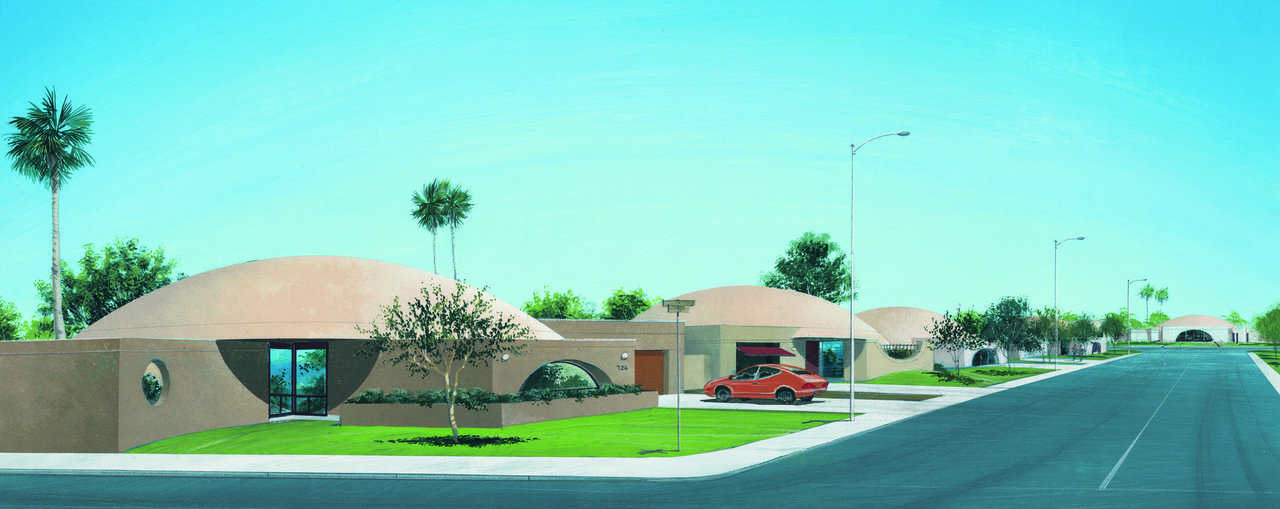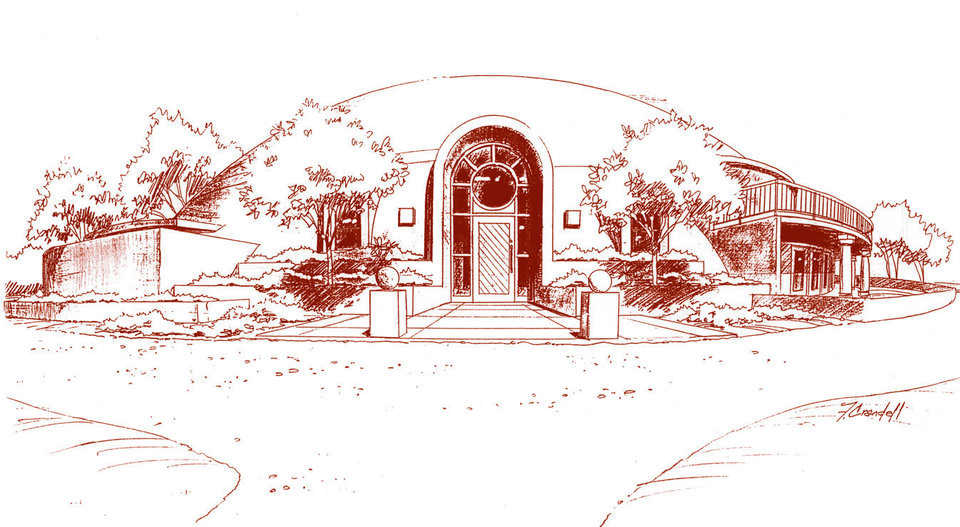It’s not here yet but Dometown, USA is coming! So, what will an all Monolithic Dome community be like?
Note: MDI president David B. South and retired architect Rick Crandall gazed into their crystal ball and did some informed speculating on life in a future community called Dometown, USA. Here are their shared thoughts:
Everyday Life
For the average American, everyday life in a Monolithic Dome community will be much like it is. The architecture will be different, of course, but people will still mow their lawns and wash their cars in their driveways. Some really significant changes will affect us by affecting certain industries and governments.
Financing
Unlike today’s situation, in Dometown, banks and lending institutions will readily accept Monolithic Domes. A lender’s concern is risk. Mortgage companies and banks always ask themselves, “What’s the worst possible thing that could happen to the structure we’re financing?” With a Monolithic Dome that can’t burn, be swept away by a tornado or hurricane, or eaten by termites, risk is significantly minimal.
Next to a mortgage payment, energy costs are a homeowner’s biggest ongoing expense. Monolithic Domes, with their superior insulation, use energy sparingly and cut energy costs. That too makes dome owners a better risk since they are less likely to miss payments.
Mortgage companies also think about resale. They prefer financing popular designs, houses that are in demand and sell easily. Acceptance of and demand for Monolithic Domes has already started growing. That increased popularity, coupled with low risk makes domes a solid investment, and the financial industry of the future will find Monolithic Domes very appealing especially neighborhoods of domes. Eventually, domes will fetch a premium because demand will outstrip supply.
Insurance
Like financing, the insurance industry’s big concern is risk. Insurance companies are famous (or infamous?) for putting millions of people and thousands of factors into computers that spit out rates based on statistics showing losses. Monolithic Domes have few losses. That’s going to show up in the data base, so premiums will go down.
Most insurance companies determine premiums by placing a house into a category. That classification depends on what the house is made of. For example, brick homes insure for a smaller premium than wood homes because brick is a more durable material. Monolithic Domes, constructed of concrete and stronger than brick, do not yet have a category of their own. But they will.
Energy
Today we have twelve nuclear power plants, six major hydroelectric areas, and many small power plants throughout this country. Still, we have areas growing so rapidly they are anticipating brownouts. Despite this shortage, people don’t want more power plants. Yet they want and need the power. It’s a Catch 22 Monolithic Domes will ease, since they use significantly less energy than comparable, conventional structures.
Construction
This entire industry will mobilize around a new set of suppliers and manufacturers specializing in materials and equipment for Monolithic Dome construction. The average person building a Monolithic Dome home will need fewer subcontractors. Instead of the fifteen subcontractors the building of a middle-class home now requires, domes will need about seven. That means less expense, more control and speedier completion.
The construction industry’s demand for wood will significantly decrease. Eventually that will help our forests replenish themselves and improve our environment.
Local Government: Zoning
Zoning purposely keeps commercial and industrial facilities away from residential areas. We don’t want commercial and industrial structures in the middle of a residential subdivision because they usually generate traffic, dirt and noise, and many are simply ugly. But what if they weren’t so unappealing?
Monolithic Domes will solve much of that undesirability. A factory could be enclosed within a neat, attractive dome and its dirt, noise and vibration contained. An electric power plant could be housed within a partially underground dome. Even a waste treatment center could be built within an underground Monolithic Dome complex and its outer top surface turned into a park.
Dometown, USA will have far less need for zoning restrictions. Moreover, since commercial and industrial facilities will be made attractive and planned closer to or even in the midst of residential areas, people will walk or bicycle to work. Less traffic means better air quality, fewer accidents, and less demand for oil.
Federal Government
When something new comes along, our federal government usually pays little attention to it as long as it remains a novelty. Consider the airplane. As a novelty affecting a very small percentage of the population, the airplane didn’t interest the government. Then the military began seeing possible uses for the airplane. Studies followed, uses developed, technology made improvements and eventually transportation, with the government’s help, permanently changed.
Monolithic Domes have already peeked the interest of some government agencies because domes conserve energy, domes survive natural disasters, domes cost less to maintain and operate. Then too, Monolithic Domes’ uses are virtually limitless. They can be designed as schools, hospitals, public buildings, prisons – just about anything communities need and want. Not only would these structures conserve energy, but many could double as shelters when disasters strike.
Social Acceptance
Right now, nine of every ten Americans has not heard of Monolithic Domes, but social acceptance is already happening. It’s a gradual process because it involves tradition and change. Most of us come from a tradition that for generations cut trees to build. That’s our socially accepted way. Using concrete as the major construction component not only of schools, churches, and other public buildings but of homes requires a significant change. That kind of change often divides people within themselves. They begin worrying and questioning: Do I really want a house that is so different? What will the neighbors and my friends think? How will they react?
But that kind of fear of change will be overcome. Monolithic Domes have the characteristics that will, in reality and in people’s minds, justify the break with tradition. It’s a matter of education. As more domes are built and used and more people learn of the Monolithic Dome’s strength, low energy use, lower ongoing costs, and wide design variety acceptability will follow.
When?
We’re already experiencing a steady, growing demand for Monolithic Domes as public and commercial structures. But what about homes? That too is growing. Both David South and Rick Crandall see small subdivisions of Monolithic Dome homes in the very near future. Within ten to fifteen years such subdivisions will be common, especially in areas often threatened by tornadoes and hurricanes. Fifty years from now, instead of cutting our trees, we’ll be mixing far more concrete, and our Dometown, USA will be safer, cleaner, and better.
UD09052013

